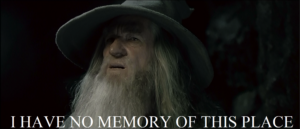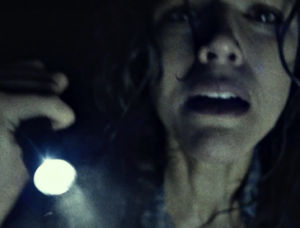
Writing rules tend to make newbies break out in hives. New writers, as I once did, believe that the word ‘rules’ automatically implies creativity is somehow stymied and worry the art will not flow.
Today, hopefully, I’ll show you not only why writing rules are so important, but why the rules are not necessarily about us. Like all creators, we are building ‘something’ that first and foremost serves a function.
Art is function’s partner.
One can, for instance, build a glorious bridge that is, in effect, a work of art. But, if people cannot use the bridge to cross over a body of water or canyon without risk of falling to their deaths, the art is a failure.
Take the Hyatt Regency Walkway collapse. Two overhead walkways made of concrete and glass, filled with partygoers, crashed onto a tea dance in the lobby, killing 114 and injuring 216. Catastrophic design failure.
The rush to complete the project, skip protocols, and ignore certain guidelines led to one of the nation’s deadliest structural failures.
Whether it is a house, a building, a roadway, a car, creators design all these things with intent and function in mind. Designers have to anticipate HOW the user will engage with their creation to anticipate design.
Design, function and art all go together.
Granted, a story isn’t a building or bridge or a road, or is it? If we fail to appreciate certain guidelines, that could mean story death, as in readers give up.
Story is a house for the imagination, a bridge from the author’s creation to the mind of the reader, a road audiences follow to meet people and explore worlds never before conceived.
Rules Create the Experience

I’m pretty sure the least fun part of designing a beautiful bridge or skyway is doing all that math to test load-bearing capacities and tensile strength. Then, triple checking contractors to make sure they’re following along with guidelines.
Why not just do the FUN things? Think of a one of those future cars. As space age as they might look, do they not all need seats? Seatbelts? A steering wheel (or something comparable)?
Brakes? Would really suck to drive 180 mph and not be able to stop. Wait, how can one drive 180 mph with no way to accelerate? Need an engine or some form of propulsion.
And, no matter how ‘out there’ car designers get, they have to be somewhat careful. Make the design too weird, change too many standard functions at one time, and drivers won’t care how it looks.
It’s too bizarre to be any fun.
Rules are for the USER, not the DESIGNER.

This is why, if we look at buildings today, they all have a foundation, walls, ceiling, etc. Same with cars and airplanes and bridges. Even if we look at their earliest forms, the modern person (or toddler) would recognize a Model-T as a car, a biplane as an airplane and a fancy suspension bridge as a bridge. We would also ALL know their purpose, no matter how ugly or lovely.
But y’all might be thinking, “These examples aren’t art! Art is subjective!“
Okay, fair point.
I played clarinet for almost five years and my favorite was jazz. A lot of improvisation goes into jazz. But, have y’all ever heard a kid learning to PLAY a clarinet?
It sounds like someone is waterboarding a goose. No joke.
I had to learn how to position my mouth (embouchure) which is different for every type of instrument. Then, I needed to learn how to read music, learn to make the notes, the proper fingering to get the right key, how and when to breathe, on and on.
Granted, I did NOT have to learn how to read music (especially for jazz). Many musicians don’t, but they STILL follow the RULES.
I could improvise all day but if, beneath my ‘jazz’, there wasn’t at least some loose sense of musical structure, how well would I fare? What if I honked like an injured water fowl? If I was constantly off key?
Who would listen to my ‘jazz’? Better still, who would think it was ‘art’?
Writing Rules are for the Reader

In my post On Writing: Why Mastery Should Matter to Authors, commenter Sonja Tyson had an excellent question.
I get the feeling as a new author that we’re being encouraged to adhere to certain structural norms. Like the advice to keep adverbs to a minimum, cut out extraneous such and such, start off punchy, stick with your genre expectations. Is storytelling becoming more of a product than an art form? …But what is mastery? Is it something different from art?
Commenter SonjaTyson02
And Sonja, don’t be embarrassed because this is an EXCELLENT question, one so good I am devoting the next posts to answer it. In the interest of time, we’ll parse out my answers.
I remember asking the same exact question when I was new. Unfortunately, I was also VERY rebellious and a know-it-all, which was bad. It made me (for far too long) an unteachable a$$hat.
It was only after years of half-finished manuscripts and shredded pages from critique groups (who, back then actually had real honest to God published authors), that I finally humbled up.
What I failed to understand in my writing youth was…say it again?
The rules were not for ME, they were for the reader.
The rules, like the component parts of what we call a ‘car’, assisted in the experience.
I—me, personally—knew every character in my story. I’d created them, knew their backstories, their secrets, their issues. I had cried when they suffered, laughed at their witty dialogue, glowed with pride when they finally found true love or whatever.
The problem was, while I knew and understood ALL these things, the reader didn’t.
I’d been playing what I’ve dubbed as Literary Barbies (or Literary G.I. Joe for those who prefer). I had envisioned a world as rich as stepping on a holodeck—only for a party of one.
While my ‘novel’ made sense in MY head, everyone else was lost. No matter how much wordsmithery I put into that manuscript, it didn’t matter because I confused my audience.
The point of a novel is to take the reader on a journey, and if the reader falls out of our method of conveyance on page 10, they won’t BE THERE for our AWESOME ending on page 300.
So today, we will focus on POV, since most newbies have no clue what it is, how to use it or even that POV is the core way readers ‘follow’ our story. We need to understand what makes sense to them on an intuitive level (as in BRAIN STRUCTURE stuff).
Writing Rules about Perspective

Some of you have heard this story but it bears repeating. When I finished my first ‘novel’ it was—I am NOT kidding—187,000 words. I literally remember thinking, “Well, this seems long enough. The End.” Two massive red flags there we’ll talk about in a different post.
I finally decided to join a writing group so they could, you know, clean up the scant few typos I might have had, or any punctuation errors *hair flip* .
Aaand…they slaughtered me.
One of the main notes that critiquers kept scribbling across my pages was ‘POV.’ All I ever saw was POV, POV, POV, POV.
Me: What IS THAT? Like Prisoners of Vietnam?
Finally, after weeks of getting POV scrawled across my pages, I rallied the courage to ask one of the senior writers what the heck POV was.
Point of View.
Through which character’s perspective is the reader experiencing the story? I have an oldie but goodie post of Point of View and why POV Prostitution (a.k.a. head-hopping) is bad for those who want further explication beyond I’m giving here.
POV is the most fundamental ‘writing rule’ we must understand if we want readers to not only want to set out on a journey, but finish it and love the experience. We must ‘follow the reader’ in that we need to think through their perspective not just ours.
How is the reader being fed information? What details are important? Who’s story is it? Why is this a story worth money, time, and attention?
The Basic P.O.V. Choices

POV offers a way that readers can follow our story. We (as the writers) choose the method of conveyance (POV). All POVs operate differently, but, if we don’t understand how they work or why we might choose one POV over another, then we run into problems.
Writing Rules for First-Person

Uses the pronouns ‘I/me/mine/my’ and is the most psychologically intimate of the perspectives. Which is why it’s been a super popular choice for the social media generation who’s used to being all up in someone’s biz.
First-Person breaks into two camps: The I Remember When and the Come Along with Me. Other than beating the hell out of the pronoun, ‘I’, this is where most writers will run into trouble.
***Nods to my earliest mentor, Saint Bob Mayer who taught me this and a lot of other stuff. He also managed not to murder Newbie Me.
In the I Remember When version, the verbs are all past-tense. Story is a recollection. The reader can relax, somewhat, because the narrator had to have survived whatever happened in order to be able to relay the story back to an audience.
Conversely, in the Come Along with Me, the reader doesn’t know what is going to happen because even the narrator doesn’t know what is going to happen.
These are SUPER EASY to accidentally jumble together. Verb tense is critical. The reader wants to know if they are in the past or in present.
I walked up the old gravel path that led to the family graveyard where more than bodies were buried.
I walk up to the family graveyard where more than bodies are buried.
Writing Rules for Third-Person

Third-Person Locked: This is where POV is through one character through the entire book and will use proper names or pronouns he, she, they, etc.
Rachel walked up the old gravel path that led to the old family graveyard where more than bodies were buried. She couldn’t believe it had come to this.
In this example, the entire story will be through the perspective of the MC, Rachel. If she cannot see or experience it through one of the five senses, then you’ve broken POV.
Third-Person Shifting: This is when we have more than one POV character who gets to hold the camera, but only in THAT POV CHARACTER’S scene.
There must be a clean break, then hand over the camera. Otherwise, readers can get confused. Same rules apply to each POV character as third-person locked.
Writing Rules for Omniscient POV

This is when GOD gets to hold the camera. Omniscient POV is very useful in epic battle scenes when a POV down on the ground or in the fray of space would become too confusing.
It makes it easier for, say, a reader to know which battle forces are surging or retreating. You (the author) can also sprinkle in information a character has no way of knowing.
NYTBSA Bob Mayer does this brilliantly in his Area-51 series. He’ll dip briefly into omniscient when explaining facts the reader needs to know about ancient Egypt (but that a character is unlikely to know). It’s efficient and seamless and the reader doesn’t notice.
Which takes mad skills to do well. It is imperative we understand the writing rules of how, why, and when to use this POV. We can’t just do a bunch of head-hopping and claim it’s omniscient.
Ken Follet is another master at wielding omniscient POV. Check out his epic historical drama Pillars of the Earth.
There are, however, problems with omniscient. First, it is a bugger to write without devolving into head-hopping. Secondly, while it used to be very fashionable before the 20th century, it comes across as cold and emotionally distant to the modern reader. Thus, it can be subconsciously off-putting.
Thirdly, did I mention it’s a bugger to write?
***For the record, I am teaching a never-before-taught class on WORLD-BUILDING and we’ll parse omniscient in that class.
The Odd Duck…Second Person

This POV is the rarest of all. This is why knowing the rules helps us break the rules and create art. In 2nd person POV, the pronoun is you. It’s very…creepy. The audience feels either lectured, attacked, or invaded.
Caroline Kepnes harnessed this bizarre POV to write the mega successful book-and-now-Netflix-series, You which is about a Joe, a bookstore clerk who fixates on a NYC writing student to the point of deadly obsession. Here is the second sentence in the opening…
You smile, embarrassed to be a nice girl, and your nails are bare and your V-neck sweater is beige and it’s impossible to know if you’re wearing a bra but I don’t think you are.
Joe the Stalker
You gotta admit, second-person WORKS. It is seriously unsettling, which is perfect for the genre/story.
Head-Hopping

Quick example:
Rachel walked up the old gravel path, her sky blue eyes unfocused, red from crying. Walter was waiting in the family crypt, garrote in hand. His stomach roiled at the thought of killing her. She was a part of him. But there were larger things at stake. She couldn’t uncover his secret. Rachel needed to know, to understand why her sister’s funeral had been so rushed. Had someone paid off the M.E.? Wouldn’t be the first time her father pulled political strings to get away with murder.
First of all, according to writing rules, unless Rachel is holding a mirror, she can’t see her own eyes. Then, she doesn’t know about Walter hiding in the crypt, so we are suddenly in his head. Then we are suddenly back in Rachel’s head. While the story is intriguing, this is where a reader would start to get confused.
Who’s head are we in? Is Walter her father or someone else? If we do this long enough, it can very easily frustrate the reader. If story is mental conveyance, a journey into an imaginary world, then this can be a miserable ride. The reader will get motion sickness and quit.
Then, all the art in the world doesn’t matter if no one finishes the book.
See, the AUTHOR knows who is whom and what is what, but POV is designed to deliver the author’s world into the reader’s imagination.
If we fail to follow the reader (what their experience will be) we can unwittingly strap them into Hell’s Tilt-A-Whirl.
Writing Rules for POV & Art of POV

Earlier, I mentioned Caroline Kepnes, and how, because she understood the strengths and weaknesses of second-person POV, she could use that for art.
Though this next technique was almost unheard of before 2000, it has become very common in the past ten years. When we understand each POV and what it offers, we can blend different POVs.
Author GENIUS T. Jefferson Parker used a mixture of third-person and first-person in his novel, and Book 3 of his Charlie Hood series, Iron River.
WHY? His MC is in third-person, but the antagonist is in first-person. Jeff wanted the reader to feel deep and profound empathy for a good person doing the wrong things for what he believed to be the right reasons.
By using first-person, the reader connects more intimately with the antagonist because we (the reader) are the antagonist for a good portion of the book (I, me, I, me).
You might also want to mix POVs to hide the identity of a killer, terrorist, bad guy. Helps in a mystery. It is also great for creating an unreliable narrator.
I hope I have demonstrated here how rules beget the art. And, maybe some of you might play around with different POVs and combinations. Just remember, the more POVs you have, the longer your book will be.
It takes time for the reading audience to care about a character, so they will need enough ‘story’ to get to know and give a fig what happens.
What Are Your Thoughts on Writing Rules?
Do you feel a little better about the ‘writing rules’? Can you see how deviating too far would confuse the reader? I love hearing your thoughts, ideas and questions!
See, Sonja! Ask and you shall have!
I am all for you guys being creative. Break writing rules! It is how we get new and amazing forms of expression. Just bear in mind that you have to ‘follow the reader’ and envision HOW they’ll experience your world.
I LOVE HEARING FROM YOU!
I will pick a winner once a month and it will be a critique of the first 20 pages of your novel, or your query letter, or your synopsis (5 pages or less).
May’s Winner and thank you for your patience. Winner is michaelbillington9 so please send your pages to kristen at wana intl dot com. A page is 250 words a page. You can go a little over just don’t get crazy, LOL. Double spaced, Times New Roman and one-inch margins. Please put CONTEST WINNER in all caps so I SEE it!
CLASSES!
***All classes come with a FREE recording
Writing RULES! NOW ON DEMAND!
ON DEMAND: Bring on the Binge: How to Plot a Series
SIGN UP HERE. Use New10 for $10 off
ON DEMAND: The Art of Character: Writing Characters for a SERIES
SIGN UP HERE Use New15 for $15 off
Classes
Spilling the Tea: Blogging for Authors
Thursday, July 14th, 7:00-10:00 P.M. NYC Time. 2022 SIGN UP HERE and Use New25 for $25 off
The Dark Arts: Building Your Villain
TUESDAY, July 19th, 2022, For more information, sign up HERE and use New20 for $20 off
World Building 101: Playing ‘Author GOD’
THURSDAY, JULY 28th 7:00 PM E.S.T. to 10:00 P.M. EST HERE
Use New15 for $15 off
Workshop
Practice Your Pitch: Master the Log-Line WORKSHOP
Thursday, August 4th, 7:00-9:00 P.M. NYC Time. This is a TWO-HOUR INTERACTIVE WORKSHOP!
For more information, SIGN UP HERE.








6 comments
Skip to comment form
EXCELLENT, as always. Thank you. Love the images!
Looking forward to more!
Thanks!
those pesky rules … however my first thought when I saw the title on Rules was “CMS,” “Strunk and White,” and of course, “CMS,” I let the editor deal with because I just simply will not. “Strunk and White …,”
OMG it was written in 1920 and updated in 1940. Thinkin’ the joyous obsession with “Strunk and White” should militantly be edited to mean something to people who were not born in 1913. I mean, “Gone with the Wind” is more updated at least in film. I’d far rather read “Spunk and Bite” than “Strunk and White.” But of course, I get slapped by said editor so I either accept it or reject it.
However, your points here helped me breathe. Thanks for the information, always good to hear.
I was in the building business 25 years before becoming a writer. Your analogy is good. There are many parallels from process to business practices between the two. The rules such as structure enhance and support one’s creativity which is the dressing and finish the writer puts over the frame. Imagine if every carpenter built every stairway on a different formula. Every step would be a misstep for the user. People need not think about stairs because the rules of stair building are ingrained and universal. Same is true with story mechanics. The reader doesn’t need to see the rules, they work invisibly, but break them and the reader will trip every time.
Author
That is a FABULOUS point. I have been places where they messed up on the standard height of stairs and you don’t realized how well your brain is trained to a certain expectation until you almost face-plant or take a tumble.
Great post. As a teacher of memoir writing, my students often ask about structure, rules, POV and such. I agree that we must have rules, know the rules, before we break the rules. I will keep this post to refer to when I get those questions. I find that too many POVs in a book will often lead me to stop reading.
thanks,